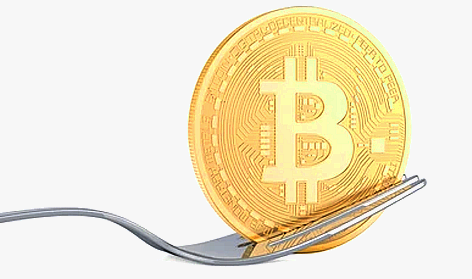Accredited InvestorsAltcoinAnatoli UnitskyAnti-Money Laundering (AML) In CryptoAPIArbitrageArtCoin TokenArticle DirectoryASICAuction Terminology GlossaryBasics of Stock Market InvestingBear MarketBest Crypto Payment Provider In the WorldBitcoinBlockchainBlockchain ConfirmationBlockchain Consensus MechanismBlockchain ForkBlockchain GlossaryBored Ape Yacht ClubBuild a Business That OutperformsBull MarketBuying SkyWay SharesByzantine Fault Tolerance (BFT) ExplainedCasascius CoinCentral Bank Digital Currency (CBDC)Centralized Crypto ExchangeCoinCoinsetCold WalletCollateralCommodity Futures Trading Commission (CFTC)Cross-Chain TechnologyCRUCrypto ExchangeCrypto GlossaryCrypto JokesCrypto Terms to KnowCrypto TickerCryptocurrencyCryptographyCryptojackingCryptounit BlockchainCryptounit GlossaryCryptounit ProgramdApp (Decentralized Application)Dead CoinDecentralized Exchange (DEX)Decentralized Finance (DeFi)Difference Between Bitcoin and EthereumDifferent Ways of Investing MoneyDigital CurrencyDistributed LedgerDo Your Own Research (DYOR)Dollar Cost Averaging (DCA)Dow Jones Industrial Average (DJIA)EncryptionERC-20ERC-721EthereumEvoScentFear Of Missing Out (FOMO)Fear, Uncertainty and Doubt (FUD)Fiat MoneyFNT Fintech CompanyGenesis BlockGlobal Unit PayGlossary of Banking TermsGlossary of Business TermsGlossary of Financial TermsHalvingHODLHot WalletHow Do I Start InvestingHow Rich is Satoshi Nakamoto?How to Create a BlockchainHow to Find Private InvestorsHow to Get Into FintechHow to Program Smart ContractsI Am Thrilled to Be a Part of This Global ProjectInitial Coin Offering (ICO)Initial Public Offering (IPO)Initial Token Offering (ITO)Innovation Basalt TechnologyInnovative Transportation TechnologiesInternational Bank Account Number (IBAN)Investing in Gold Mining StocksInvesting in Gold MiningJagerJoy of Missing Out (JOMO)Know Your Customer (KYC)LedgerLiquidity in CryptocurrencyMaker and Taker Fees in Crypto TradingMarket Capitalization (Market Cap)Meme CoinMetal Credit CardMetaMaskMillenials Now Have Access to Generational WealthMy Best Investment EverNew Digital EvolutionNFT GlossaryOff-Chain TransactionsOn-Chain TransactionsOpen Edition NFTPeer-to-Peer (P2P)Personal Loan GlossaryProbably the Best STO on the MarketProof of Stake (PoS)Real Estate Glossary of TermsReal Estate Investing GlossaryRebase TokenSecurities and Exchange Commission (SEC)Security Token ExchangesSecurity Token Offering (STO)Soulbound Decentralized Identities for Security TokensSoulbound ID Launch by Stobox Proves a SuccessSoulbound TokensStoboxStock Market GlossaryTestimonialsTether Platform and Token (USDT)UnitEx ExchangeUnitsky String TechnologiesUNTBUSDUValidatorWe Started Investing When We Were 25What are Blue Chip NFT?What are Blue Chip Stocks?What are Crypto Assets?What are Crypto Smart Contracts?What are CryptoPunks NFT?What are Digital Assets?What are Digital Collectibles?What are Gas Fees?What are Gas Wars?What are Hashmasks?What are Non Fungible Tokens?What are Non-Sufficient Funds (NSF)?What are Soulbound Tokens (SBT)?What are Stablecoins in Crypto?What are Transactions Per Second (TPS)?What are Utility NFTs?What are Utility Tokens?What Does Burning Crypto Mean?What Does Diamond Hands Mean?What Does Paper Hands Mean?What Does To The Moon Mean?What Does WAGMI Mean?What Happened to Satoshi Nakamoto?What is a 51% Attack?What is a Baby Boomer?What is a Backlink?What is a Banner?What is a Barcode?What is a Bid-Ask Spread in Crypto?What is a Block in Blockchain?What is a Block Reward?What is a Blockchain Address?What is a Blockchain Node?What is a Blockchain Oracle?What is a Blog?What is a Bond?What is a Bot?What is a Broker?What is a Business Accelerator?What is a Cash Cow?What is a Commercial Bank?What is a Commodity?What is a Con?What is a Credit?What is a Credit Limit?What is a Credit Rating?What is a Crypto Airdrop?What is a Crypto Bridge?What is a Crypto Scam?What is a Crypto Token?What is a Crypto Wallet?What is a Crypto Whale?What is a Crypto Winter?What is a Cryptocurrency Public Ledger?What is a Cryptocurrency Roadmap?What is a DAO?What is a Dark Pool?What is a Day Trader?What is a Dead Cat Bounce?What is a Default?What is a Derivative?What is a Digital Credit Card?What is a Fiscal Quarter?What is a Fungible Token?What is a Governance Token?What is a Grace Period?What is a Hard Fork?What is a Hot Wallet?What is a Hybrid Blockchain?What is a Hybrid PoW/PoS?What is a Joint Account?What is a Market Cap?What is a Merkle Tree in Blockchain?What is a Mining Farm?What is a Nonce? What is a PFP NFT?What is a POS System?What is a Prepaid Card?What is a Private Blockchain?What is a Private Key?What is a Public Blockchain?What is a Public Key?What is a Reserve Currency?What is a Ring Signature?What is a Routing Number?What is a Rug Pull in Crypto?What is a Safe Deposit Box?What is a Satoshi?What is a Security Token?What is a Seed Phrase?What is a Shitcoin?What is a Sidechain?What is a Soft Fork?What is a Spot Market?What is a State Bank?What is a SWIFT Code?What is a Tax Identification Number (TIN)?What is a Time Deposit?What is a Transaction Account?What is a Variable Interest Rate?What is a Virtual Assistant (VA)?What is a Virtual Card?What is a Virtual Currency?What is a Visa Card?What is a Whitelist in Crypto?What is a Whitepaper?What is Accounts Payable (AP)?What is AMA in Crypto?What is Amortization?What is an Accrual?What is an ACH Transfer?What is an Actuary?What is an Addendum?What is an Algorithm?What is an Angel Investor?What is an Annuity?What is an Asset?What is an ATM?What is an Atomic Swap?What is an Audit?What is an Avatar?What is an EIN?What is an Embargo?What is an Entrepreneur?What is an IDO (Initial Dex Offering)?What is an Interest Rate?What is an Internet cookie?What is an Investment Bank?What is an NFT Drop?What is an NFT Floor Price?What is an Ommer Block?What is an Orphan Block?What is an Outstanding Check?What is an Overdraft?What is Artificial Intelligence (AI)?What is B2B (Business-to-Business)?What is B2G (Business-to-Government)?What is Bartering?What is Bitcoin Dominance?What is Bitcoin Pizza Day?What is Blockchain Immutability?What is Blockchain Used For?What is BRICS?What is Business-to-Consumer (B2C)?What is C2C (Customer to Customer)?What is Capitalism?What is Catfishing?What is CFD Trading?What is Check Kiting?What is Cloud Mining?What is Communism?What is Content Marketing?What is Decentralization in Blockchain?What is DeFi in Crypto?What is Delisting?What is Depreciation?What is Digital Marketing?What is Diversification?What is Double Spending?What is Dumb Money?What is Dumping?What is Earnings Per Share (EPS)?What is Economics?What is Email Marketing?What is Equity?What is Etherscan?What is Fintech?What is Foreign currency?What is Forex?What is Fundamental Analysis (FA)?What is GameFi?What is Generative Art NFT?What is Gwei?What is Hard Currency?What is Hash Rate?What is Hashing in Blockchain?What is Inflation?What is Initial Game Offering (IGO)?What is Interest?What is Interest Income?What is Mainnet?What is Mastercard?What is Metaverse in Crypto?What is Mining in Cryptocurrency?What is Minting NFT?What is Mobile Banking?What is Money Laundering?What is NFT Alpha?What is NFT Metadata?What is NFT Rarity?What is NGMI Meaning?What is Nominal Interest Rate?What is Online Banking?What is Open-End Credit?What is OpenSea NFT Marketplace?What is Personal Identification Number (PIN)?What is Play-to-Earn?What is Polygon?What is Proof of Authority (PoA)?What is Proof of Work (PoW)?What is Public Key Cryptography?What is Pump and Dump?What is Quantum Computing?What is Refinancing?What is Retail Banking?What is Ripple?What is Sharding?What is Slippage in Crypto?What is Smart Money?What is Solvency?What is Soulbound ID?What is SSL?What is Staking in Cryptocurrency?What is Technical Analysis (TA)?What is Testnet?What is the Ask Price?What is the Better Business Bureau (BBB)?What is the Bid Price?What is the Dark Web?What is the InterPlanetary File System (IPFS)?What is the Gold Standard?What is the Lightning Network?What is the Prime Rate?What is the Sandbox?What is the Secondary Market?What is the World Bank?What is Tier 1 Capital?What is Tokenomics?What is TRC-20?What is Universal Banking?What is Unspent Transaction Output (UTXO)?What is Usury?What is Volatility in Crypto?What is Wash Trading?What is Web3?What is Whisper?What is XRP?What is Zero-Knowledge Proof (ZKP)?Who is Beeple?Who is Satoshi Nakamoto?Who is Vitalik Buterin?Why Tokenization is a Safe HavenWhy You Should Try Your Hand at Trading
What is a Hard Fork?
- Home
- Blockchain Glossary
- What is a Hard Fork?
Due to their potential for causing severe disruptions and volatility, it is important for even a casual investor to understand what hard forks are and how they can affect the value of their investments.

Hard forks can be highly impactful, making it crucial for cryptocurrency investors to have knowledge of this phenomenon.
What is a Hard Fork?
A hard fork is a significant change to the software protocol of a blockchain network that results in the creation of a new branch or a separate version of the blockchain. It is a fundamental divergence from the original blockchain, and it usually occurs when developers or miners disagree on the rules governing the blockchain's operation.
When a hard fork takes place, the network splits into two paths, each following its set of rules. In other words, it creates a new cryptocurrency that shares the transaction history of the original cryptocurrency up to the time of the fork, but from that point forward, the two cryptocurrencies will have different transaction histories.
To better understand the concept of a hard fork, it is essential to understand the blockchain network's basic structure. A blockchain is a decentralized, distributed ledger that records transactions in a series of blocks. Each block contains a set of transactions that are validated and added to the blockchain by miners.
To ensure the network's integrity, the rules governing the blockchain's operation are coded into the software protocol. These rules define the conditions under which transactions can be added to the blockchain, the number of coins that can be mined, and the reward structure for miners, among other things.
Over time, blockchain networks may experience changes in their rules to improve their efficiency, security, and functionality. However, changes to the rules require the network's participants to agree to them. When there is no consensus, a hard fork may occur.
During a hard fork, the blockchain's existing nodes (computers connected to the network) are split into two groups. One group follows the original rules, and the other follows the new rules. The split can create confusion and cause problems such as double-spending and other errors.
Hard Forks vs Soft Forks
While hard forks are a common method for updating software protocols in blockchain networks, not all cryptocurrencies support this approach. Instead, many prefer to use soft forks, which are viewed as a more secure option that ensures full compatibility with the existing blockchain network.
Soft forks offer the ability to introduce new features and capabilities without altering the blockchain's fundamental requirements, meaning nodes that do not update to newer versions will still be considered legitimate by the chain.
Soft forks are frequently used to add new programming-level functionality, and they offer a clear distinction from hard forks. To understand the difference between these two approaches, consider a basic operating system upgrade on a mobile device or PC. After the upgrade, all the programs on the device continue to function with the new version of the operating system.
In contrast, a hard fork would require switching entirely to a brand-new operating system, which can create compatibility issues and potential disruptions to the system's operation.
Financial Impact of a Hard Fork
A hard fork can have a severe financial impact on a cryptocurrency, and its introduction can cause significant volatility in the system. There are several reasons for this.
In the past, hard forks have been used by large cryptocurrency traders to artificially inflate the price and make a quick profit. These traders, often called "whales," buy up a large number of coins before the hard fork occurs, which gives them access to a significant amount of the new currency.
They then exchange their old coins for the new ones resulting from the fork, knowing that the price of the new coin is inflated. They subsequently dump these coins on the exchange over time, causing their value to plummet. This creates confusion among existing investors, who are led to believe that the coins are worth more than they actually are.
As a result of these manipulative tactics, many traders abandon the cryptocurrency being forked altogether, as they see it as a risky investment.
Despite these concerns, forking often increases the price of a cryptocurrency, as the new currency is often technologically more advanced. This leads to more people buying into the currency, which can cause its value to increase in the short term.
Ultimately, forking can be disruptive for the crypto community, but failing to update cryptocurrencies can be even more disruptive. Since cryptocurrencies rely on technology, they must be updated from time to time to remain relevant and secure. Failure to do so can result in fewer features, increased vulnerability to attacks, and a lack of market interest.
Related Articles

Blockchain Fork
A blockchain fork is a situation that occurs when the nodes in the network cannot reach a unanimous consensus regarding the future state of the blockchain. In other words, when...

What is a Soft Fork?
Forking can happen in two ways: a soft fork or a hard fork. This article will focus specifically on the concept of...

What is Double Spending?
Different types of Double Spending attacks can pose a significant threat to the security of Blockchain, and it is crucial to be aware of them.

What is a Crypto Whale?
Determining who qualifies as a whale in the crypto world is somewhat subjective. Generally, the community views holders of a significant portion of the available coins as...
- Home
- Blockchain Glossary
- What is a Hard Fork?